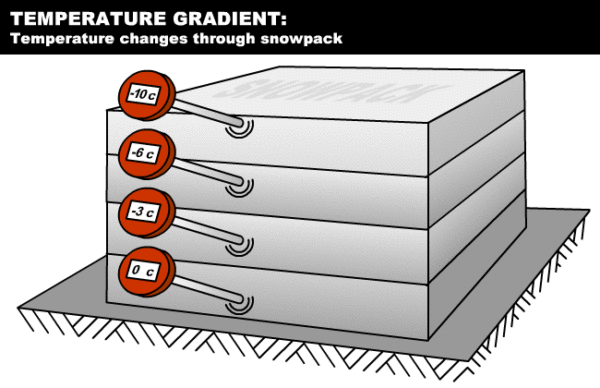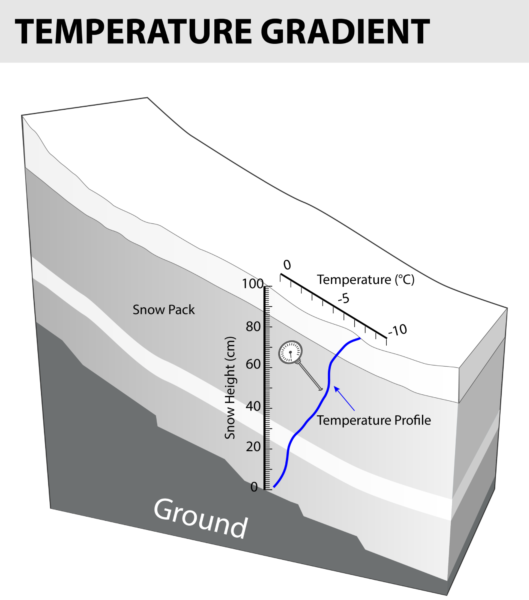Anywhere the snow temperature changes across layers in the snow.
Temperature gradients within the snowpack are an important concept in snow science because they drive metamorphism, or changes, in the snowpack. Think of your baseboard heaters in a cold room. If you crank up the furnace, the warm air starts to migrate and mix with the cold air until your room warms up. The snowpack is constantly trying to establish equilibrium temperatures, so warm air loaded with water vapor migrates towards cold air. This transfer of water vapor drives snow metamorphism at the microscopic scale. Strong temperature gradients cause a snow layer to facet, or weaken. Conversely, a weak temperature gradient allows the snow to round or strengthen. Temperature gradients form from various thermal processes in the snow that add or take away heat. Heat in the snowpack can come from the warm ground, solar input, rain, or warm temperatures. Cooling of the snowpack can be caused by cold temperatures or radiative cooling of the snow surface under clear skies. If heat and cooling processes come together under a short timespan, strong temperature gradients can form in the snowpack.

A simplified plot showing how the temperature changes with snow depth. The snow surface temperature tends to fluctuate more dramatically with changes in weather and daylight. These larger fluctuations cause stronger temperature gradients. Credit: University of British Columbia

